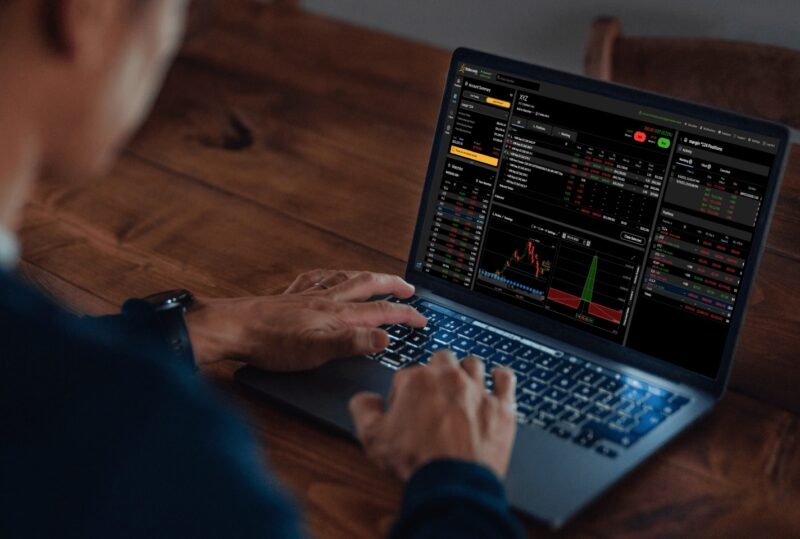In the fast-paced world of financial markets, a silent revolution is underway, pitting the strategic prowess of human traders against the relentless efficiency of artificial intelligence. As technology advances, trading platforms are finding themselves at a crossroads, caught between traditional methods and the allure of data-driven decision-making.
The dynamic interplay between human intuition and algorithmic precision raises intriguing questions: Can machines truly outsmart the seasoned trader, with their instincts honed through years of market experience? Or does the human touch bring an irreplaceable element of understanding and adaptability that algorithms lack?
This article delves into the evolving landscape of trading, exploring how innovative technologies are reshaping the competition and what it means for the future of investing. Join us as we uncover the strengths and weaknesses of both camps, analyzing the tools and strategies that define this new era of trading.
The Rise of AI in Trading: An Overview

The advent of artificial intelligence in trading has revolutionized the financial landscape, presenting a formidable challenge to traditional human traders. Once dominated by intuition and experience, trading strategies are now increasingly driven by sophisticated algorithms capable of processing vast amounts of data in mere milliseconds.
These AI systems analyze market trends, identify patterns, and execute trades with unparalleled speed, leaving human analysts scrambling to keep pace. As platforms harness machine learning and predictive analytics, the potential for enhanced decision-making grows exponentially.
The integration of tools like the dom chart further empowers traders by providing a clear visual representation of market depth, enabling them to track order flow and liquidity in real-time. This allows traders to make more informed decisions and gauge market sentiment, enhancing their strategies in ways that purely automated systems may overlook.
However, this surge in technology prompts a crucial question: can the cognitive nuances and emotional intelligence of human traders truly compete with the relentless precision of AI? The answer lies in an evolving battleground where the synergy of man and machine, complemented by tools like the DOM chart, may ultimately redefine trading dynamics.
The Role of Machine Learning in Market Analysis

Machine learning has revolutionized market analysis by equipping traders with advanced tools to decode vast amounts of data in real-time. With algorithms that learn and adapt, these models sift through historical prices, market sentiment, and social media trends, revealing patterns that human analysts might overlook.
For instance, while a traditional analyst might spend hours grappling with spreadsheets and reports, machine learning can churn through millions of data points in seconds, identifying potential trades before they become apparent to the human eye. This capability not only enhances accuracy but also allows for more strategic decision-making.
As AI continues to evolve, the divide between human intuition and algorithmic precision narrows, igniting fierce competition on trading floors everywhere. The question isn’t just whether machines can outperform humansit’ss how will they shape the future of trading itse.f?
Automated Trading Systems: Speed and Efficiency

Automated trading systems have revolutionized the financial markets, introducing a level of speed and efficiency that human traders simply cannot match. Imagine a scenario where market fluctuations occur within milliseconds: while a human trader is still processing the implications of a news report, an algorithm can instantaneously analyze vast amounts of data, execute trades, and even adjust strategies on the fly.
These systems incorporate sophisticated models and machine learning techniques to optimize their performance, adapting to market conditions without the emotional biases that often cloud human judgment. As a result, they not only reduce the latency involved in trading decisions but also enhance liquidity in the markets, creating an environment where responsiveness is paramount. In this age of technological competition, the relentless precision and unwavering pace of automated trading platforms set the stage for a new era where speed reigns supreme, leaving traditional trading methods in the dust.
Conclusion
In conclusion, the ongoing competition between AI vs. Human Traders has fundamentally shifted the landscape of financial markets, as trading platforms increasingly leverage technology to enhance decision-making and efficiency.
While human traders bring intuition, creativity, and adaptability, AI systems offer unparalleled speed, data processing capabilities, and predictive analytics. The synergy of both approaches may ultimately define the future of trading, leading to a more dynamic and responsive market environment.
As technology continues to evolve, it is clear that the integration of AI and human insight will play a crucial role in shaping the strategies and outcomes for traders in an increasingly complex financial world.


